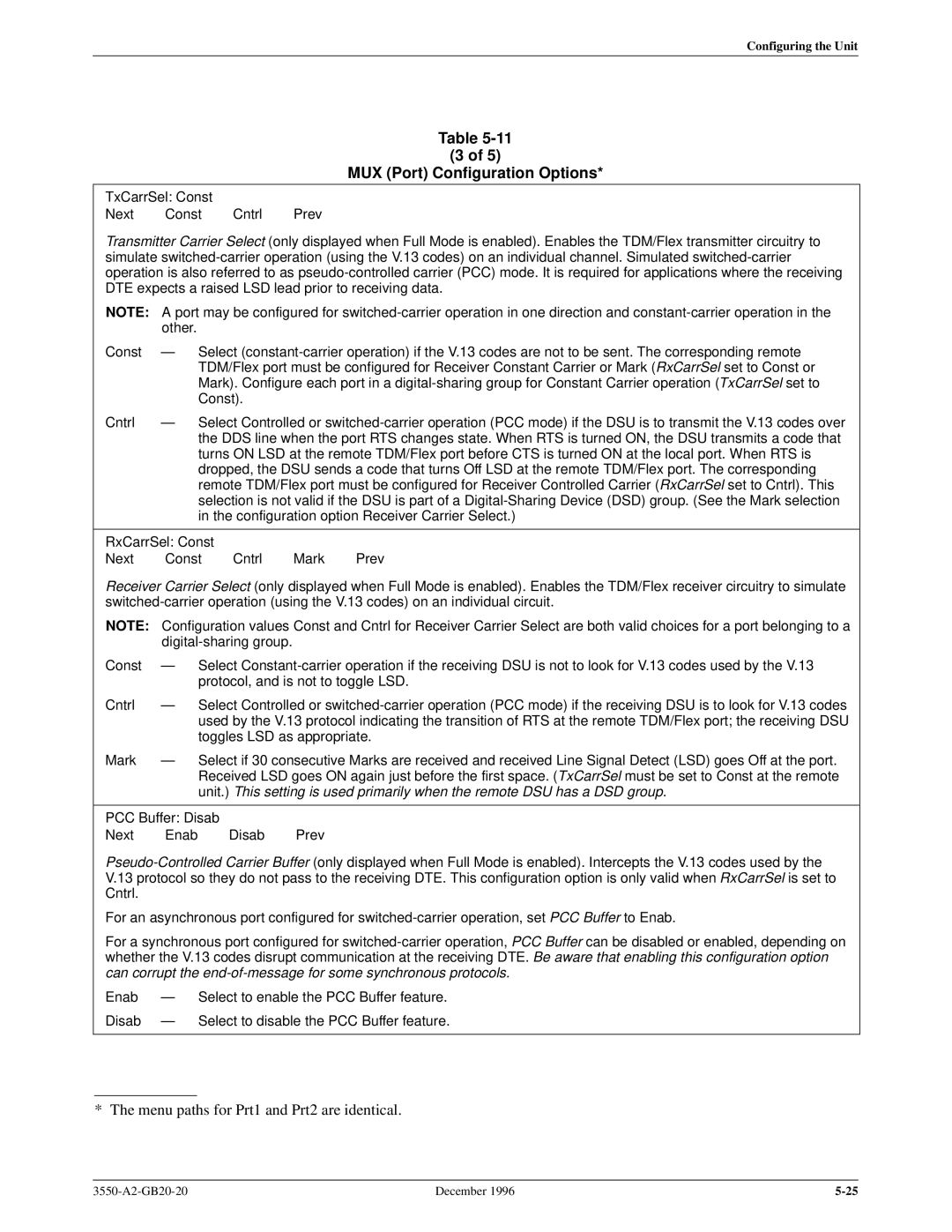
Configuring the Unit
Table
(3 of 5)
MUX (Port) Configuration Options*
TxCarrSel: Const
Next Const Cntrl Prev
Transmitter Carrier Select (only displayed when Full Mode is enabled). Enables the TDM/Flex transmitter circuitry to simulate
NOTE: A port may be configured for
| other. |
Const | Ð Select |
| TDM/Flex port must be configured for Receiver Constant Carrier or Mark (RxCarrSel set to Const or |
| Mark). Configure each port in a |
| Const). |
Cntrl | Ð Select Controlled or |
| the DDS line when the port RTS changes state. When RTS is turned ON, the DSU transmits a code that |
| turns ON LSD at the remote TDM/Flex port before CTS is turned ON at the local port. When RTS is |
| dropped, the DSU sends a code that turns Off LSD at the remote TDM/Flex port. The corresponding |
| remote TDM/Flex port must be configured for Receiver Controlled Carrier (RxCarrSel set to Cntrl). This |
| selection is not valid if the DSU is part of a |
| in the configuration option Receiver Carrier Select.) |
RxCarrSel: Const
Next Const Cntrl Mark Prev
Receiver Carrier Select (only displayed when Full Mode is enabled). Enables the TDM/Flex receiver circuitry to simulate
NOTE: Configuration values Const and Cntrl for Receiver Carrier Select are both valid choices for a port belonging to a
| |
Const | Ð Select |
| protocol, and is not to toggle LSD. |
Cntrl | Ð Select Controlled or |
| used by the V.13 protocol indicating the transition of RTS at the remote TDM/Flex port; the receiving DSU |
| toggles LSD as appropriate. |
Mark | Ð Select if 30 consecutive Marks are received and received Line Signal Detect (LSD) goes Of f at the port. |
| Received LSD goes ON again just before the first space. (TxCarrSel must be set to Const at the remote |
| unit.) This setting is used primarily when the remote DSU has a DSD group. |
PCC Buffer: Disab
Next Enab Disab Prev
For an asynchronous port configured for
For a synchronous port configured for
Enab | Ð | Select to enable the PCC Buffer feature. |
Disab | Ð | Select to disable the PCC Buffer feature. |
* The menu paths for Prt1 and Prt2 are identical.
December 1996 |
